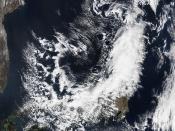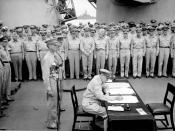What was the nature of the Occupation of Japan by the Allies?
Well before Emperor Hirohito announced that the war had not turned in 'Japan's favour', the Allied forces had been engaged in considerable pre-surrender planning. By the time of Japan's capitulation, a reform program tailored to that country's conditions had been formulated 'both as a general statement of purpose and as a comprehensive military directive.�'
For all this preparation, there were still serious divisions among those responsible for Japan's new direction. The hard peace camp, which included figures like Dr. Stanley Hornbeck, wanted punitive economic sanctions, and a thorough condemnation of the old elites. As far as they were concerned, the removal of the emperor system and the weakening of Japanese capitalism were absolutely essential in pacifying Japan.
Many in the hard peace camp believed that China, and not Japan, would emerge as the postwar leader in Asia. These individuals were referred to as the 'China Crowd'.
They were more focused on strengthening the Chinese so that they could become America's key trading partner in Asia. As a result of this persuasion, they were not too concerned about reducing Japan's status to that of a minor world player. Instead, they advocated a harsh position and pressed for fundamental changes in Japan's political and economic structure.
On the other end of the spectrum, was the soft peace camp, which included figures like Edwin Reischauer. This camp was much less inclined to support harsh economic sanctions, and saw in the old elites a promising group of men who could help foster growth and stability. With regards to the emperor system, they recognised the fundamental role the Throne had played in Japanese life, and knew that the monarchy could actually be utilised to help promote reform.
Proponents of a soft peace argued...


